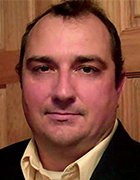Can Telehealth Providers Take Advantage of Broadcast Internet Spectrum?
The FCC is looking to expand the market for Broadcast Internet spectrum, giving healthcare providers the opportunity to develop telehealth programs that push data out to new users and locations.
The Federal Communications Commission is clearing a path for telehealth providers to use “Broadcast Internet” spectrum, giving them more opportunities to expand their reach.
In a Declaratory Ruling issued this week, the FCC clarified that long-standing television station ownership restrictions don’t apply to the leasing of spectrum for such uses as telemedicine, smart agriculture and smart cars. This means providers and other entities can use that spectrum – which is opening up as TV stations switch their digital TV (DTV) services to the ATSC 3.0 standard – to augment over-the-air video services.
The FCC authorized broadcast innovation through ATSC 3.0, or next-generation broadcast TV, in 2017, and stations in Dallas, Orlando, Phoenix, Las Vegas, Portland (OR) and Boise are already using it. Under the ATSC 3.0 technical standard, broadcasters can provide traditional over-the-air services more efficiently using Internet Protocol (IP)-based technologies.
In an accompanying Notice of Proposed Rulemaking, the FCC is asking stakeholders for advice on potential uses for this spectrum and comments on how to amend existing ancillary and supplementary service rules, put in place more than 20 years ago, to address current capabilities and support the use of Broadcast Internet spectrum.
“This fulfills an unrealized promise of the digital TV transition - the use of excess spectrum for supplementary or ancillary services, in addition to traditional video programming,” FCC Chairman Ajit Pai said in a press release. “ATSC 3.0 can be used to deliver innovative new services related to automotive transportation, agriculture, distance learning, telehealth, public safety, utility automation, and the Internet of Things, to name a few, not to mention others we haven’t even dreamed of. Our goal should be to ensure that the market - not outdated rules - determines which new services and technologies will succeed.”
“For IoT, smart ag, and telemedicine applications, Broadcast Internet’s low-band spectrum could provide an efficient means of communicating with devices over wide areas,” added FCC Commissioner Brendan Carr in a separate release.
Carr said the FCC’s action removes “the uncertainty cast by media regulations that were drafted for an entirely different set of broadcast TV services.”
“In the Declaratory Ruling, we ensure that Broadcast Internet services are not weighed down by legacy media regulations by clarifying that the Commission’s broadcast television station ownership rules do not apply to leasing arrangements between broadcasters and third parties for the provision of Broadcast Internet services.”
The new capability includes limitations. As FCC Commissioner Jessica Rosenworcel notes, ATSC 3.0 can be used to push data out, but it can’t receive data.
“That’s a big obstacle for work, education, or telehealth online,” she said in a separate release. “Because as our movement to online life during the past several weeks has demonstrated, we are going to need more symmetrical connections to support next-generation services on our networks. In addition, any broadcast spectrum for new internet services will differ from market to market. That means it might be hard to cobble together airwaves to provide data services at competitive speeds with a nationwide footprint. Finally, without a market-based effort to put new chips in a range of devices, broadcasters might instead put these airwaves to use by just leasing it out to the same wireless carriers we are familiar with today.”







